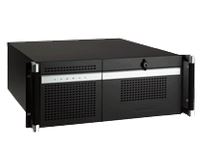One of the toughest decisions any Industrial PC user has to make is when to update their Industrial PC Platform. You can’t just swap out your PC and any other legacy product and be up and running again in no time. There’s usually custom software that has been developed to not only interface with I/O and peripherals, but also to work seamlessly with any device drivers required. The software might also communicate with your infrastructure, which may be comprised of varying platforms and key departments that monitor, control and report on platform/device status, run rates, productivity and traceability. Considerations must be made for the departments affected; the amount of application development; engineering and hardware required; along with the resources needed for integration, implementation and debugging.
I have diagnosed the following 5 areas as strong indicators that it’s time to upgrade your Industrial PC platform:
- End of Life Single Board Computer (SBC)/ATX Motherboard: Due to discontinuation of CPU socket and chip sets, it becomes inevitable that you’ll have to replace your SBC or ATX motherboard. Even though Industrial boards possess a long life of 5-7 years enabling one to standardize, you will have to go with a newer CPU and memory technology at some point. If you do have to make the change, you can still stay within the PICMG 1.0/PICMG 1.3 requirements of your platform, enabling you to successfully implement any ISA/PCI/PCIe specified.
- Obsolete I/O Cards: Plenty of legacy I/O cards are still being utilized in industrial platforms. Some are still available for integration, while others exist because the platform is long in the tooth. Either way, manufacturers are providing a line of updated I/O on a quarterly basis, making it more difficult to standardize off of legacy I/O applications. This is forcing many users to upgrade their platform to accommodate all changes seen in the marketplace.
- End of Support for Operating System: The best example of this is Microsoft ending support on Windows XP Pro SP3. Although you can still purchase OEM licensing, the security support is no longer provided by Microsoft. This is fine for some users with implementation and operation within the four walls but for others, it has becomes the main reason for platform upgrade. It turns out that Windows 7 Pro and WES7P are working out pretty well for industrial users, so the transition hasn’t been bad for most.
- Upgrade of Software Application: If your IT department/developers didn’t have a main hand in development of your application software, there’s a good chance that whomever did will force an upgrade at some point. Either an integrator goes out of business and the software is no longer supported or yearly upgrades are published, enabling users to utilize their software with newer technology. The first of the two definitely will cause a platform upgrade but the latter can sometimes be done without a mandatory upgrade. Either way, this is one of the main reasons users do upgrade.
- Replacement Peripherals: PLCs, Cameras, Servo Motors, I/O, Printers, Scanners, etc. all change over time. When they do, some of their interface requirements also change. This can create the necessity for updated hardware. In this case, you might have to upgrade your platform, enabling you to properly interface and communicate with all external hardware.
Obviously, there’s a myriad of reasons why you might upgrade your Industrial PC Platform. Although my goal here was to shed some light on what I feel the top five indicators are, as always, if you’d like to discuss this article, your application, or how we might be of assistance, please contact me.
